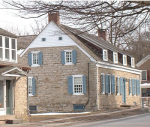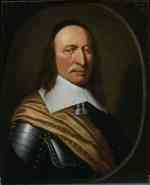History
 Historical Overview of Hurley:
Historical Overview of Hurley:
Hurley is an historic Hudson Valley town of 6,700 people ideally situated between the Hudson River and the Catskill Mountains. It lies two hours from New York City, one hour from Albany and three hours from Boston. Then Lenape people lived throughout the area now considered the Town of Hurley for thousands of years prior to the arrival of European settlers. The Dutch arrived in 1662 just before the English took control of the New Netherlands colony. The town is composed of the hamlets of Old Hurley, West Hurley, and Glenford.
Old Hurley's Main Street is part of the National Register of Historic Sites due to its well-preserved stone houses which have served as residences for more than 300 years. The Hurley Heritage Society's museum exhibit notes that in 1777 Hurley was briefly New York State's capital after the residents of Kingston, the capital at the time, fled when the British burned it during the Revolutionary War.
West Hurley and Glenford were once renowned for fertile farmlands and the abundance of bluestone used as an important building material in the late Ninetheenth and early Twentieth centuries. The artist Winslow Homer spent ten summers documenting life in West Hurley just before the construction of the Ashokan Reservoir. Both communities were seized by eminent domain for New York City's water supply.
West Hurley is the primary location of New York City's principal reservoir, the Ashokan, which was begun in 1906 with the site purchase by the New York City Water Department the flooding of the hamlets of Ashton, Brodhead, Brown Station, Olive Branch and Olive City which disappeared forever as well as the predecessors of the villages that were relocated - West Hurley, Glenford, Olive, West Shokan, Shokan, Olivebridge and Boiceville.
Today, West Hurley is the home of the Maverick Concert Hall, where the Maverick Concerts are held each summer in a rustic setting with perfect acoustics. The concert series has the distinction of being the United States' oldest continuously operating summer chamber music series. The Maverick Concert Hall was built by Hervey White in 1916 who was the founder of the utopian community in West Hurley, known as the Maverick Art Colony.
Hurley is further noted for its fertile fields, majestic mountain views and enchanting forests.
 The History of the Town of Hurley:
The History of the Town of Hurley:
In the Spring of 1662, Peter Stuyvesant, Dutch Governor of Niew Amsterdam, established the village of Niew Dorp on the site of a Native American Settlement. The relationship between the Native American people and the European settlers was complicated. Differing cultural values and language barriers contributed to violation of land treaties on the part of the Europeans. As a result, on June 7, 1663, the Native people attacked and destroyed the village, and took captives who were later released. England took control of the Dutch Colony of New Netherland on September 6, 1664. On September 17, 1669, the village, abandoned since the Native American conflict, was resettled and renamed Hurley. In 1708 two large land patents from the New York Colonial government expanded the bounds of Hurley northward to near the present boundary with the Town of Woodstock and southward to the old boundary of the Town of New Paltz.
The southern section was quickly settled by farmers and the villages of Bloomingdale and Wagondale (now Creeklocks) were established. The discovery of limestone suitable for cement made this a valuable economic area and the village of Rosendale became its center. These villages and the surrounding area became the core of the Town of Rosendale, established in 1844.
The Hamlet of Old Hurley remained an agricultural community of close-knit families. Farming the Esopus Valley they supplied grain to the growing colony, New England, and the American Revolutionary forces. In October, November, and December of 1777, Hurley was the military headquarters for General George Clinton's Continental forces and the temporary capital of New York State.
The northern section of the Town was a forested wilderness until the discovery, in the 1830s, of a fine quality shale. Known as Blue Stone, used in the construction of road curbing, sidewalks and building facades. West Hurley, Glenford, and Ashton were villages established by the quarry industry. In 1917, New York City's need for a dependable water supply resulted in land condemnation and the flooding of the valley to create the Ashokan reservoir.
West Hurley was the largest of the communities seized. At the time, one thousand residents lived in the vibrant, close-knit community. The "Business District" in the Town of Hurley consisted of a train station, general store, blacksmith, an Opera House, churches, schools and farms. Although it is commonly said that West Hurley and Glenford were "relocated", the fact is there was no intentional relocation of the community. Residents who wished to move their buildings out of the reservoir basin were forced to buy it from New York City or face a lawsuit with the knowledge that New York City would prevail. Today, the Town of Hurley is working to overcome the significant challenges faced by the division of the town by the reservoir and the loss of its Business District by finding innovative ways to create a stronger sense of community.
George P. Newkirk - A Person Who Made a Difference:
George NewKirk was born the free son of Dianna Johnson, a slave, about 1820. His father’s name is not known. Around 1843 George moved into the Town of Hurley and obtained work as a farm hand. By 1850 he had established a family; a wife Margaret and three children, Aaron H., Richard and Dianna.
On September 30, 1850 George purchased an acre of land from Cornelius P. Wynkoop for twelve dollars. The lot was in a small clove on the Hurley Mountain Road, just south of Dug Hill Road. On this parcel he built a house for his family and lived there for the rest of his life. Within three years he had purchased three more parcels of land around his original home lot and in the foothills behind his home. This is the earliest recorded land purchase by a Black person in the Town of Hurley.
During this period, two more children, Sarah and Catherine, were born. In all, twelve children would be born to George and Margaret, but only five would survive.
George was not content to work for others and so he established his own business, selling fresh clams. To insure that he had a ready supply of clams to meet his customers needs, he dammed a stream on his property, creating a fresh-water pond to store his clams in until they were marketed. Later in life he was recognized as the village caterer for special functions. He is recalled as being involved with weddings and funerals.
It appears that George also used his upland as a place for Black families to take up temporary residence. As during and after the Civil War many of these families had English surnames not common to the town, he may have been a quiet participant in the underground railway. George’s eldest son also supported the cause of the Civil War and served in the Northern Army in the 125th Artillery. He died in service in 1866 at the age of 25 and was buried in a local Black cemetery near his home.
By 1870, George estimated his real and personal estate to be over eleven hundred dollars. This was a considerable sum, for an average wage earner at that time earned one dollar a day in wages. He also gained local recognition as the first Black in New York State to have the right to vote. The date of this event is not known, as the records no longer exist at the local level. However, attaining his right to vote also indicates that he was educated.
He died in his early eighties at his home on Hurley Mountain Road in February, 1901. Burial was in the local Black cemetery near the grave of his son Aaron, on a hill overlooking the Esopus Valley.
Contacts:
Town Historian
PO Box 569
10 Wamsley Place
Hurley, NY 12443
Email
Phone: 845 331-7474 ext. 312
Fax: 845-331-0058
Links:
1745 Return of Officers to Town of Hurley - This external link is no longer active
This is a typical returns of town officers list, filed with the County Clerk, showing the results of an election for the Township of Hurley of 1745. Most of the positions are familiar and remain in use today. Other positions reflect the needs of the colonial period. "Survyors of the Roade" laid out roads to meet rural transportation needs; "Fence Veawers" inspected fences used to keep livestock and "Overseers of the Poor" were responsible to oversee services to the needy. Note that the authority to conduct these elections came from "King George the first". Freeholders were defined by statute as persons possessing real property worth at least £60, above all mortgages and other encumbrances thereon. Also of note, is the handwriting. Clerks of the period were professional hand writers, using quill (feather) pens and bottled ink.
Documents:
This material, other than original Town records, is available for use at the Office of the Historian by appointment. This list should be considered partial as reference material is being added as it is located. If you are unsure of the value of a particular reference, feel free to contact the historian. Appointments for research assistance are strongly recommended and may be made by phone or mail.
